The clocks have changed, the winter season is here, and we are now living with less daylight hours for the next few months. This change, combined with relaxed COVID restrictions, means that we’re spending more time indoors. The usage of public indoor spaces will be increasing so now is the perfect time to ensure that your building is safe for all users. Conversely to this, as working from home continues to be the norm for some, staff taking annual leave before year end, and the inevitable time off due to seasonal illnesses, some buildings are more frequently being left unoccupied, so there is a need to make sure that these are secure. Our top 10 tips will explain some easy ways to keep your buildings both safe and secure this winter.
1. Ensure Cylinders Are Maintained
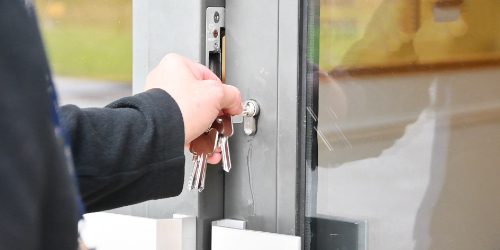
As with so many items of door hardware, cylinder barrels and locks of all varieties will operate more smoothly and function correctly with each use, if they are well maintained. With door cylinders this is particularly important on the external half of barrels that are fitted to external doors. Cylinder barrels are exposed to all weathers, allowing for dirt and dust to enter the keyway, creating an obstruction which can prevent the key from fully entering the cylinder plug, or being able to rotate.
All cylinders, both internal and external, should be checked and cleaned as part of a regular maintenance program so that the building can be kept secure. The best products to use for this are either a graphite lubricant or silicone-based lock spray, but it is always suggested to refer to the cylinder manufacturer for specific guidance on maintenance.
2. Check Fire Signage Is In Place
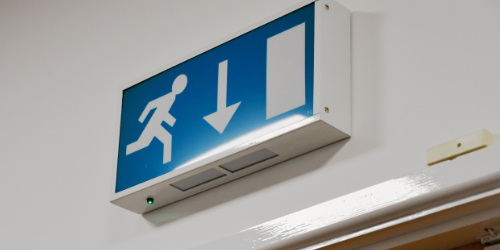
All fire rated doors and final exit doors should have fire and escape door signage fitted, in line with building regulations and standards. Fire compartmentation doors could require one of three common options of fire sign: locked storage cupboard doors and infrequently used locking doors would have a Fire Door Keep Locked sign, high use doors such as canteens, classrooms or bathroom foyer doors would have Fire Door Keep Shut signs to both faces, and doors installed with electromagnetic door closers would have Automatic Fire Door Keep Clear signs on both faces.
Along fire exit routes and on final exit doors, there are a selection of directional fire signage and emergency exit signs available to suit all applications, ranging from rigid PVC, stainless steel to photoluminescent and bi-lingual signage. Installing the correct signage will help to keep the building’s users safe by giving them visual instruction on fire and final exit measures.
3. Ensure Escape Doors Are Functioning Correctly
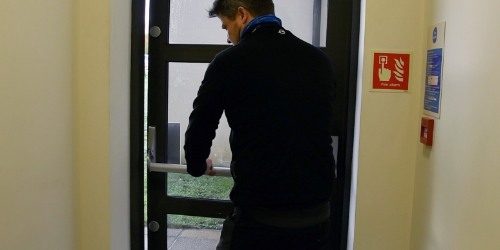
Final exit doors should be regularly checked and maintained to a high standard as they are relied upon in emergency situations to provide a quick and easy means of egress from a building. Door hardware should comply with either EN 179 or EN 1125 Harmonised European Standards and be in full working order.
Panic hardware is suitable for single doors and rebated or non-rebated pairs of doors, and should be installed with the correct hinges for the door weight, along with final exit door signage. Correctly functioning escape doors, complete with signage, which may include instructions on how to operate the escape door hardware, will help to keep your building safe to use.
4. Ensure Doors Into Rooms With Hazardous Or Highly Sensitive Material Are Secure
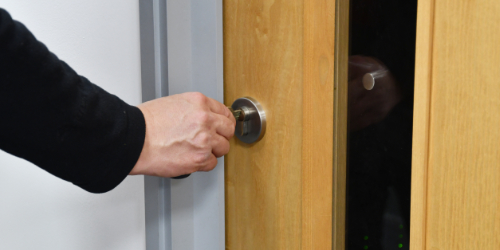
For the safety of your building’s users, or the security of your company’s sensitive data or materials, locking doors should have correctly functioning hardware and be regularly maintained. Whether a key operated cylinder mortice lock is installed or an access control solution, staff and other users should be aware of all security procedures, keeping locking doors closed and locked at all times.
5. Ensure All Required Key Holders Have Access To The Building
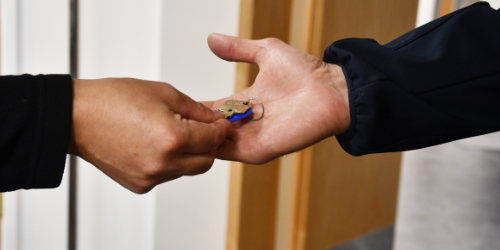
Security personnel, or the responsible people within your business, should be equipped with the correct keys or access control credentials, such as proximity cards or fobs, that allow them access to the building in order to complete security checks and carry out an required maintenance whilst a building is unoccupied.
We have already covered the value of well maintained cylinders so it is important that facilities and security staff have the correct access to perform these checks, making sure no locks on doors or windows have been tampered with or have been subject to any acts of vandalism.
6. Ensure Padlocks On External Gates Are In Good Working Order
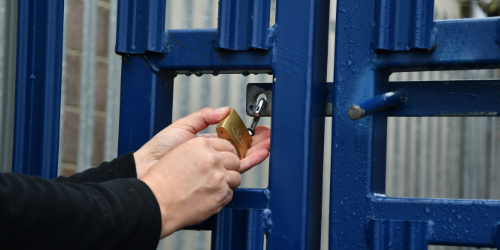
So far, we have talked about the security of a building itself, but physical security measures often extend to incorporate fencing, access ways and external gates. Whilst a premises and its perimeter can be covered by CCTV, the security hardware installed externally still plays an essential role, either as a visual or physical deterrent. External gates can be automated, equipped with access control but a more common and cost-effective measure is fitting a padlock.
As with externally fitted cylinder barrels, padlocks are subjected to all weather conditions and are vulnerable to tampering and vandalism. It is as crucial to correctly maintain a padlock as it is with any other types of locking and security devices. The key should enter the padlock smoothly and turn without obstruction whilst the padlock shackle should cleanly open and reengage with each use. The same lock spray used on cylinder locks can also be used on most types of padlocks.
7. Ensure Your Windows Are Secured And Locked
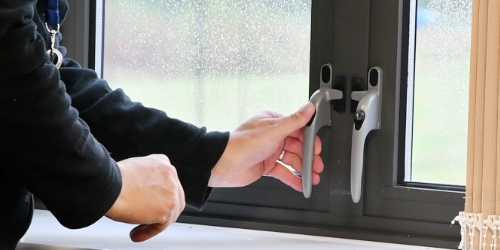
Whilst windows are not used for pedestrian access or egress, they can be a vulnerable part of a building for unauthorised entry. Opening ground floor windows in particular, should be fitted with a key operated lock or secured internally to bar external access.
A locked window not only provides security from the outside but can also help prevent unauthorised exit. Windows at a high level can be kept closed with standard casement stays and fasteners, fanlight catches or automatic operators, keeping the windows secure even at height. Having window locks and security devices installed can deter attack or theft as the building appears safe and secure.
8. Ensure All Valuable Items Are Locked In A Safe
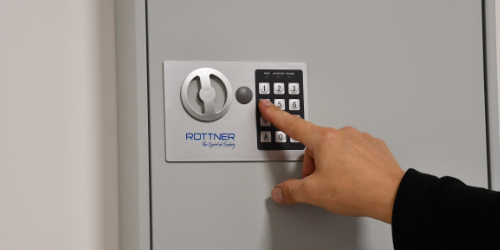
In tip No.4 we covered keeping sensitive and hazardous material under lock and key but the same also applies to valuable items. For many smaller companies or a property management business covering multiple sites, valuable items may be small enough to secure in a floor mounted, wall mounted or free-standing safe.
Security staff and others requiring access, should be well versed in the relevant security procedures and aware that they are required to protect the credentials for the safe, keeping any keys or fobs and cards in a secure place, and not sharing an access code with unauthorised personnel or anyone external to the business.
9. Ensure Your Alarm System Is Functioning Correctly

Commercial premises will likely have intruder alarm and fire alarm systems installed. They should be supported, serviced, and maintained by an accredited installer. An approved fire and security company can offer suitable intruder alarm systems for many applications, from local bells to a full monitoring service, plus conventional and addressable fire systems.
Ensure that the system is up to date, compliant and maintained to all current regulations, keeping your building safe and secure 24 hours a day.
10. Ensure You Know How To Find Your Emergency Locksmith

In addition to alarm systems which are monitored and supported by a third party, for due diligence, a practical plan should be established for employees and tenants that includes contact details in case of a security incident or issue.
If there is a mechanical failure with a locking mechanism, whether it is a cylinder barrel or mortice lockcase, or if a lock has been damaged or tampered with, having the number of an emergency locksmith to hand allows for an efficient remedy to any access or security problem.
You can read more on physical security in our blog on The Burglar’s Checklist.
Explore our high quality products, or contact our team today to discuss your needs.












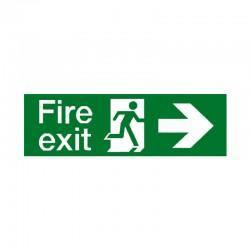
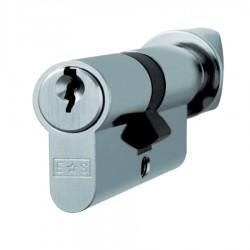
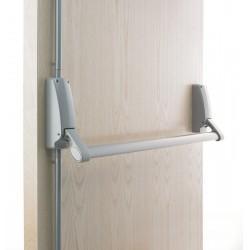
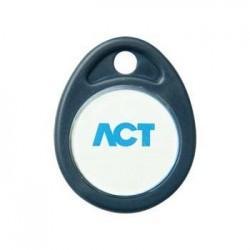
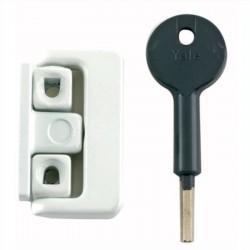
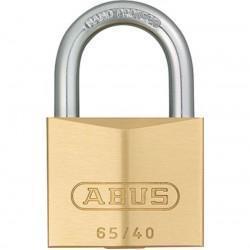




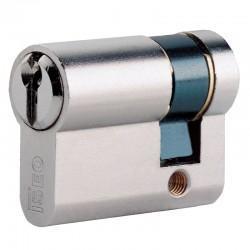




Comments